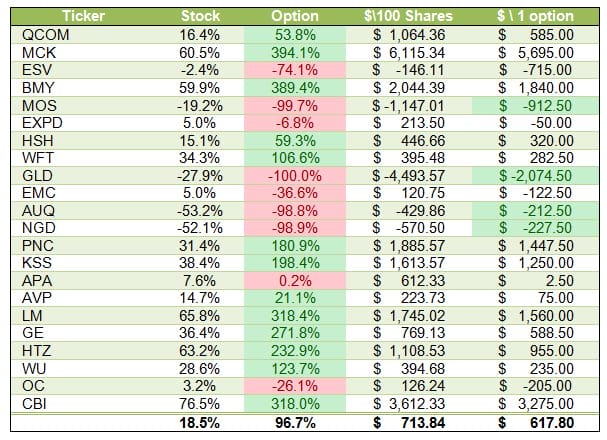Long-term equity anticipation securities (LEAPS) are a type of option contract that offers investors the opportunity to bet on the long-term price movement of an underlying asset such as a stock, index, or commodity. Options contracts, in general, offer flexibility and leverage in trading, allowing investors to speculate on the future direction of an asset’s price. LEAPS, in particular, stand out for their extended duration, lasting several years compared to the shorter-term options that typically expire within a month or two.

Image: blog.optionsamurai.com
Many investors who wish to wager on long-term trends in the market without taking on the full commitment of purchasing the underlying asset opt for LEAPS. For instance, if an investor is optimistic about the long-term prospects of Apple stock and expects a considerable rise in value over the next two years, they might consider buying an LEAP with an expiration date of two years from now. If their prediction holds true and Apple’s stock price increases, the LEAP will gain value. Alternatively, if the stock price falls, the LEAP will likely expire worthless.
Understanding the mechanics of LEAPS options is essential before using them in a trading strategy. There are two main types of options contracts: calls and puts. Call options present an investor with the right to buy the underlying asset at a specified price called the strike price, while put options offer the right to sell. In the case of LEAPS, the strike price is predetermined, and it remains constant throughout the contract’s life. The price of LEAPS options, like other options contracts, is influenced by factors such as the underlying asset’s price, volatility and time until expiration. Volatility is an important element that impact LEAPS pricing, specifically implied volatility. Implied volatility assesses the market’s expectations for future price fluctuations in the underlying asset and influences the premium paid for LEAPS options.
LEAPS options offer a multitude of benefits and drawbacks, which traders should weigh cautiously before incorporating LEAPS into their trading strategy. Extended duration provides one of the most notable advantages. LEAPS options offer investors a longer time frame to capitalize on price swings, allowing for potential substantial gains if the underlying asset price appreciates. The longevity of LEAPS provides more margin for error in predicting price movements, making them time-friendly for traders.
Despite their upsides, LEAPS bear some inherent disadvantages that investors must acknowledge. The significant cost of LEAPS in comparison to shorter-term options is one significant drawback. The premium paid for LEAPS options reflects the added time value, frequently surpassing the premium of shorter-term options. Moreover, LEAPS entail substantial risk. If the underlying asset’s price moves against an investor’s prediction, the LEAPs option could expire worthless, resulting in a complete loss of the premium paid. Therefore, comprehending the risks associated with LEAPS trading is paramount before making investment decisions.
LEAPS trading involves a unique set of strategies and nuances that traders must grasp in order to succeed. A versatile approach to LEAPS is to employ them in conjunction with a conservative trading strategy. This may involve purchasing LEAPS with a strike price that is either at-the-money or slightly out-of-the-money, and holding the position over the long term, expecting a gradual upward trend in the underlying asset’s price. Another common strategy is to utilization LEAPS options in combination with vertical spreads. This technique entails buying one LEAPS option and selling another LEAPS option with a different strike price to create a more defined risk and reward profile.
In summary, LEAPS options are an intriguing tool for investors seeking to capitalize on long-term price movements with the adaptability and leverage that options contracts offer. The extended duration of LEAPS provides advantages, including increased time for price realization and a margin for error in forecasts. However, these benefits come with a higher premium and the risk of substantial loss if the underlying asset’s price moves adversely. Understanding the nuances of LEAPS trading, implementing sound strategies, and meticulous risk management are essential for successful LEAPS options trading.
![Weeklys and LEAPS [Options Trading Strategies] - YouTube](https://i.ytimg.com/vi/-uTy5QZXes8/maxresdefault.jpg)
Image: www.youtube.com
What Are Leaps In Options Trading

Image: www.pinterest.com






